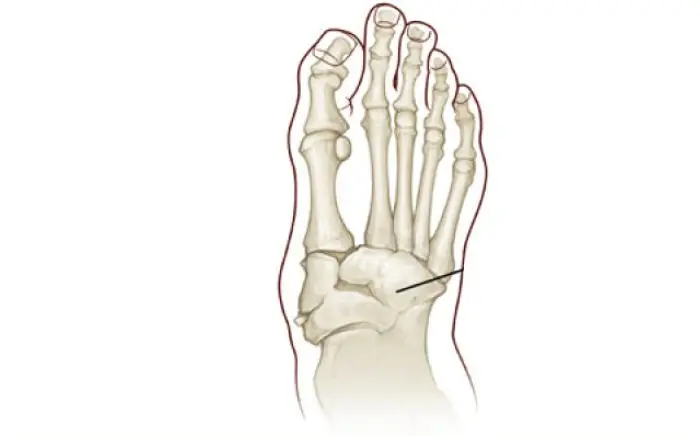Charcot Joint Disease (Degeneration of a Weight-Bearing Joint)
What is Charcot Joint Disease?
Charcot joint disease, also known as Charcot neuroarthropathy, is a serious condition that causes the gradual breakdown of bones, joints, and soft tissues in the foot and ankle, especially in patients with severe peripheral neuropathy. The condition is most commonly seen in people with diabetes, and if left untreated, it can lead to severe deformity, ulceration, and even limb loss.
At SoCal Foot and Ankle Doctors, with locations in Santa Monica and the Cedars-Sinai Medical Towers, we offer early diagnosis, advanced imaging, and comprehensive treatment plans to help prevent progression and preserve mobility in patients with Charcot joint disease.

What Causes Charcot Joint Disease?
Originally described by Jean-Marie Charcot in 1868 in patients with syphilis, and later recognized by William Jordan in diabetic patients in 1936, this condition is characterized by destructive changes in weight-bearing joints due to sensory nerve damage.
To develop Charcot, three key factors are typically present:
- Peripheral sensory neuropathy – often related to diabetes or other neurologic conditions, causing loss of pain perception in the foot.
- Normal or increased blood flow – circulation is usually intact, sometimes even hyperactive, which fuels bone resorption.
- A minor injury or trauma – frequently unrecognized by the patient due to numbness, leading to repeated microtrauma.
Because patients cannot feel pain, they continue to walk on the injured foot, worsening the internal damage over time.
Signs and Symptoms of Charcot Foot
- Redness, warmth, and swelling in the foot or ankle (often mistaken for infection)
- Rocker-bottom foot deformity
- Instability when walking or standing
- Sudden or gradual onset of foot shape changes
- Little to no pain despite significant bone injury
Early recognition is critical — Charcot foot can rapidly progress if not treated immediately.
Diagnosis of Charcot Neuroarthropathy
Diagnosis is made based on:
- Clinical exam and history of neuropathy (especially in diabetic patients)
- Imaging studies including X-rays, MRI, or CT scans
- Temperature comparison between limbs (affected foot may be significantly warmer)
At SoCal Foot and Ankle Doctors, our team uses advanced diagnostic techniques to distinguish Charcot foot from infection, cellulitis, or osteomyelitis, which may appear similar.
Charcot Foot Treatment in Santa Monica & Cedars-Sinai
Immediate offloading and immobilization is the cornerstone of Charcot treatment.
Non-Surgical Treatment Includes:
- Total contact casting to reduce pressure and allow healing
- Custom bracing or CROW boot (Charcot Restraint Orthotic Walker)
- Blood sugar control in diabetic patients
- Custom shoes or orthotics once the active phase resolves
Surgical Treatment:
In cases of severe deformity, ulceration, or instability, surgical reconstruction may be required to:
- Realign the foot
- Stabilize joints with internal hardware or external fixation
- Prevent limb loss
Surgery is considered after the acute phase has resolved and inflammation has stabilized.
Get Help Before It’s Too Late
Charcot foot is a limb-threatening condition that requires immediate attention from a podiatric specialist. If you have diabetes, neuropathy, or unexplained foot swelling, contact SoCal Foot and Ankle Doctors today. With locations in Santa Monica and Cedars-Sinai Medical Towers, we are trusted by patients across West LA for early diagnosis and expert care.
Our Docters
Our Board Certified Podiatrists
Socal Foot and Ankle doctors are committed to delivering the most exceptional treatments.

Board Certified Foot & Ankle Specialist
Office Time
Location: Santa Monica
Mon – Thur: 9:00 AM – 5:00 PM
Friday: 9:00 AM – 5:00 PM

Board Certified Foot & Ankle Specialist
Office Time
Location: Santa Monica
Mon – Thur: 9:00 AM – 5:00 PM
Friday: 9:00 AM – 5:00 PM
Request Appointment
NON-INVASIVE ADVANCED TREATMENT
BOARD CERTIFIED
FOOT & ANKLE
Surgeons
Years Experience
Happy Patients
Location
Local Partners
